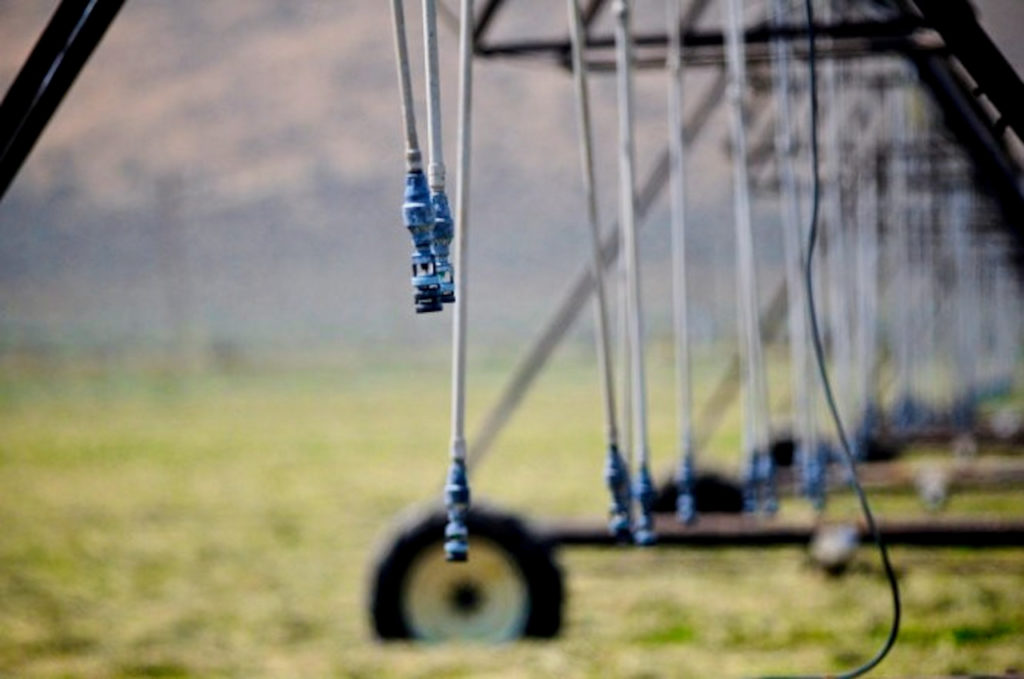By the Oregonian Editorial Board | Sept. 10, 2016 | The Oregonian: Draining Oregon
State regulators approve permits for wells in Oregon even as they suspect there isn’t enough water in some areas to keep pace.
A permit application might state it “cannot be determined” whether enough ground water existed for the well. Yet time and again, Oregon Water Resources Department managers approved the application.
The lax regulatory culture is so engrained, some farmers and ranchers began pumping their wells before submitting an application.
Reporters Kelly House and Mark Graves of The Oregonian detailed the galling practice in a recent four-part series titled “Draining Oregon.”
They showed how the department failed to measure and protect the resource it was tasked to manage and in turn, potentially put fish, animals and the communities that rely on the water at risk. As it stands — and whether or not it’s sustainable — the state has approved farmers and ranchers to drain nearly one trillion gallons of Oregon’s underground reserves annually.
The practice of approving wells in untested basins must stop. And state lawmakers must act quickly to focus on the crisis they’ve failed to address for years.
House, who has since left The Oregonian, reported how department managers for years ignored warnings by their own hydrogeologists. She found that Water Resource leaders had caved to pressure from lawmakers and interest groups.
The pressure is understandable and so great that in 2013, then-Gov. John Kitzhaber backed away from a solid plan to create a stable funding source for the department with fees on those holding water rights.
Department leaders defend their actions by saying they didn’t have the money or staff to do the research necessary to determine whether they should deny permits and defend their decisions. And yet they once offered up the small amount of research money they had for a potential budget cut.
More than a dozen Oregon basins remain a mystery, and research must be done as soon as possible to determine their water levels. Oregonians need to know how much water is available to make responsible decisions about how to tap the aquifers deep underground.
Many environmental emergencies are amorphous and need global attention. The need for water is among them. Yet this small piece of the problem is not so complicated.
The Water Resources Department estimates that between $45 million and $75 million is needed to complete the necessary research. House reported that a $100 annual fee on all water-rights holders along with federal matching money and some new employees could pay for the job that could be completed within five years.
At the department’s current pace, the research wouldn’t be done until 2096.
Lawmakers, who have scheduled a September hearing on the issue, must require the scientific reviews and lock in a funding mechanism to make it happen. They’ll likely face pushback on ideas involving fees for water-rights holders. But as long as fees remain minimal, it’s a small price to pay to protect their own interest in those potentially stressed basins.
Lawmakers should also look north and consider setting higher standards for well approvals. Washington doesn’t allow a new well if it would cause any harm to a stream that’s already hurting for water, House wrote. Oregon’s standard is when harm to streams would be “substantial.”
What’s most frustrating about this situation is how many of those likely to be affected are farming and ranching communities that have faced declining economies for years — often, they feel, because of government regulation.
Some of that regulation was necessary to protect some lands and various species.
But the Water Resources Department’s reluctance to regulate may have set up a situation in which some of the unmapped basins may already be dangerously low and water rights might have to be rescinded.
Lawmakers must launch serious work on the issue in September with the goal to accelerate the pace of basin research that can provide more clarity to all. If not, the anger and distrust that already divides our state is likely to deepen among those Oregonians who have built their lives on the land.
This editorial originally appeared in the Sept. 10, 2016, issue of The Oregonian, based upon reporting in the paper’s Draining Oregon series.

